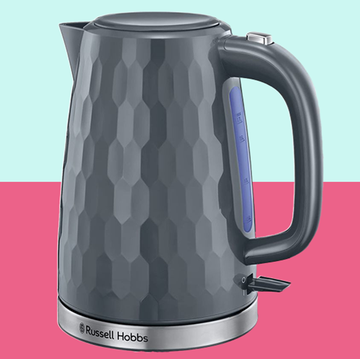I’m not a great sleeper. That’s putting it lightly – I’m actually a terrible sleeper. Unless the temperature, noise, brightness, mattress and conditions are just right, I struggle to drift away. And as soon as I’ve registered that I’m having a bad night, it can take its toll until morning. If I’m lucky, I will get 3-5 hours of sleep; if I’m unlucky, I won’t sleep at all, and I stare at my phone until I decide it’s late enough to get up for work.
So I was intrigued when I stumbled upon the military sleep method. If anything could cure my tossing and turning, I figured a technique that’s designed to help soldiers drift away, even on the battlefield, would do the trick. But how does it work in practice, and does it actually work? I gave it a trial for a week to see if it made a difference.
What is the military sleep method?
The military sleep method was first introduced in the book Relax and Win: Championship Performance back in 1981. It was used by soldiers to help them fall asleep quickly in the most hostile of environments. It supposedly takes as little as two minutes to take effect.
What to read next
It involves a combination of deep breathing, mindfulness and visualisation. You start by slowing down your breathing and keeping the rate consistent. Then, you begin to gradually relax the body by focusing your attention on each individual part, working your way down from head to the toe – like a body scan. Finally, you visualise a relaxing scene, and that’s all there is to it!
Here’s a step-by-step to help guide you:
- Slow your breathing - Take a moment to focus on your breath. Close your eyes. inhale deeply and then gradually release. Continue with this rate.
- Relax your face - Start with the nerves on top of the scalp, then move onto the forehead, eyebrows, eyes, nose, mouth and jaw etc, only moving on once the part feels relaxed and at ease, so no clenched teeth or scrunched eyes. Be as detailed as you can with your scan for the best effect and have patience.
- Drop your shoulders and release your arms – Move the focus down your neck and into your shoulders. Make sure you’re not hunched and your fists aren’t clenched. Detect the muscles moving down each arm (one at a time), all the way to your fingertips.
- Feel the warming sensation running through your body – It should follow your body scan as you work your way from top to bottom.
- Relax your chest – Notice your breathing as you do this, and make sure it’s still slow and deep. Move your attention to your stomach and don’t forget to focus on each section of the spine in turn too.
- Gradually relax each leg – Work your scan down each leg, noticing every sensation. Move from the hip to the thigh, knee, calf, ankle and finally the foot, finishing with the toes, not forgetting that warming sensation that follows.
- Visualise – You’ve got a couple of options here: you could picture yourself lying in a canoe on a serene lake with rolling blue skies for 10 seconds, or lying in a black velvet hammock, surrounded by darkness for 10 seconds. Alternatively, you can simply repeat the words ‘Don’t think’ in your mind for 10 seconds. I also found it useful to repeat this mantra whenever a rogue thought popped into my head throughout the process (it inevitably will). Then return to your mindfulness.
And that’s all you need to do! These visualisations are pretty specific; you could broaden it to other relaxing scenes if needed but I was willing to try anything to see if it helped.
What happened when I tried the Military Sleep Method?
I will level with you; the first night was a catastrophe. I went to bed early and tried to create the ideal environment to sleep. I asked my partner to wear his headphones as he watched TV in bed instead of listening to it aloud so I could have silence. But he couldn’t get his headphones to connect with the TV, got frustrated and then gave up and turned everything off anyway. The snoring then started about 20 seconds later (he always falls asleep almost as soon as his head hits the pillow and it’s sickening). Such a whiplash of stress followed by the noise got under my skin quickly and left me wired and annoyed.
I recited the method over and over, but my anger at the situation took hold and kept me awake. And when you’re determined to relax, it becomes all the more difficult to do so. After an hour, I ended up turning on my bedside lamp and doing Sudoku at 1am until my mind was more at ease. I fell asleep shortly after this without the method.
On day two, I went to bed at my usual time - my partner having charged and connected his headphones in advance this time round. I wore my eye mask to block out the light and gave the method a go. Practicing the body scan was fine, but remembering the additional instructions actually kept me awake if anything. Rogue thoughts kept popping into my head and I had to recite the ‘Do not think’ mantra to keep myself focused. Trying to feel the warm sensation in my body and picture myself in a canoe at the end also seemed unproductive and I soon got bored. My hay fever also wasn’t helping matters with the deep breathing; it’s like everything was working against me! Before too long, my partner was switching off the TV and I knew the snoring was coming. Rather than trying everything at once, I just focused on the deep breathing and the body scan for now. And instead of being annoyed by the snoring, I tried to time my breath to it, to make sure I continued with my deep breathing. My body relaxed quickly from this alone, and that’s where I fell asleep.
On my third night, I felt a lot more relaxed about using the technique, even though I knew I still had to get up early in the morning. What would be, would be, and there wasn’t so much pressure on it magically sending me to sleep. I began my deep breathing, began my body scan, relaxed my head and my arms… and that was it, I fell asleep. And slept soundly through the night.
The next three nights were similar in experience, although the snoring woke me up in the middle of one night, and the cat woke me up in another. In the first case, my anger began to get the better of me, but once I opened a window and could hear the residual rain falling, that calmed me quickly and the method came in use. The second time, the snoring beat me; even with earplugs, it was all I could hear, so I spent that night on the sofa. With no noise, I fell asleep again in 10 minutes or so. Generally, where there were no disturbances, the method worked a treat and I slept soundly quite quickly.
The real challenge came on the final night before a fresh week at work. I’d slept for 9 hours the previous night, which was a lot for me, so I was a little concerned I wouldn’t be able to sleep. But, I went in with an open mind and began my process. Sadly I just wasn’t tired enough to fall asleep off the bat. But it was certainly relaxing my body; after each round, I felt weighted and calm.
Unfortunately, after an hour of this and no success, I fell back into my old habits of feeling stressed, angry and clock-watching. I started doing sudoku, tried sleeping on the sofa, and then moved back into the bedroom again after a couple of hours. In the end I went through the entire night without sleep, but I don’t blame the military sleep method for this.
My previous few nights and the relaxed feeling I had to begin with both show its effectiveness. But if I’m irritable and angry, the method was always going to fail. Plus, it felt like there was extra pressure for it to work with the feature in mind!
Verdict
I’m pleased I tried the military sleep method; it showed me how much my mentality influences my rest. While my partner’s snoring is annoying, it is much easier to sleep through it while I’m calm and collected and this method can help me to achieve that. When I still can’t sleep, rather than tossing and turning (and getting flustered), distracting my brain with a book or just a quick TV show can better prepare me to sleep later – and that’s when the military sleep method will come to the rescue.
While it was a work in progress, I now have a better understanding of what to do. For me, the visualisations didn't really work, but I found my own calming environments which did. Practice makes perfect with this technique, and while you might not always fall asleep within two minutes, one thing’s for certain – it will help to relax you.




















